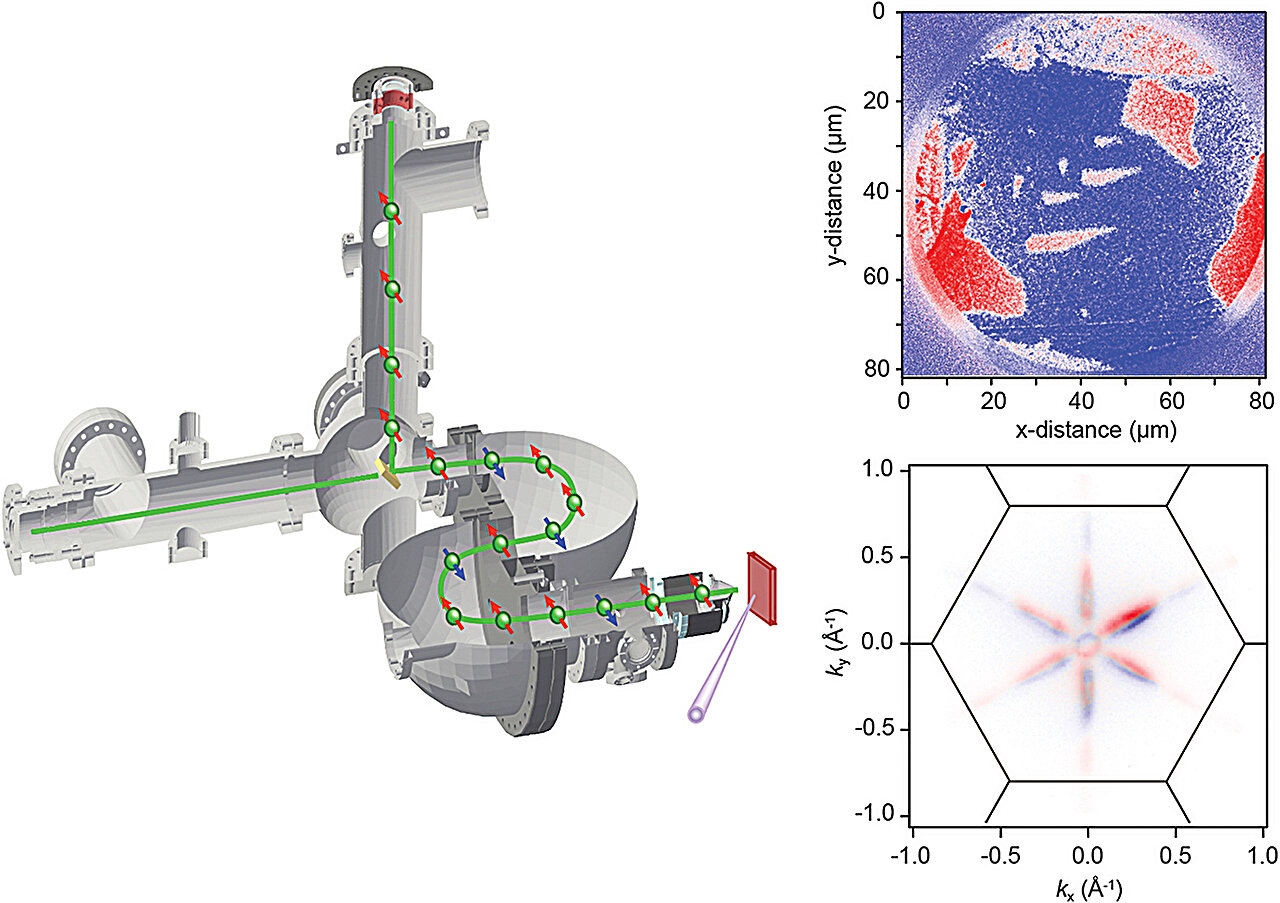Graphical summary. Credit: Advanced Materials Science and Technology: Methods (2024). DOI: 10.1080/27660400.2024.2328206
× closure
Graphical summary. Credit: Advanced Materials Science and Technology: Methods (2024). DOI: 10.1080/27660400.2024.2328206
Electron spin states can now be detected with higher resolution and more efficiently, opening up new opportunities in materials analysis and data processing techniques.
Researchers Koichiro Yaji and Shunsuke Tsuda at Japan’s National Institute of Materials Science have developed an improved microscope that can visualize key aspects of the spin state of electrons in materials.Their research was published in the journal Advanced Materials Science and Technology: Methods.
The quantum mechanical properties of electrons, called spin, are more complex than the spin of objects in our everyday lives, but are related to the measurement of the electron’s angular momentum. The spin state of electrons can have a significant impact on the electronic and magnetic behavior of the materials they are part of.
The technique developed by Yaji and Tsuda is called imaging spin-resolved photoelectron microscopy (iSPEM). It uses the interaction of light with electrons in a material to detect the relative arrangement of electron spins. It focuses specifically on electron spin polarization—the extent to which electron spins are collectively aligned in a specific direction.
The team’s iSPEM machine consists of three interconnected ultrahigh vacuum chambers used to prepare and analyze samples. Electrons are emitted from the sample through absorbed light energy, accelerated through the device, and analyzed through interaction with the spin filter crystal. The results are displayed as images, which experts can use to gather necessary information about the spin state of the electrons in the sample.
“Compared with traditional machines, our iSPEM machine has greatly improved the data acquisition efficiency by 10,000 times, and the spatial resolution has been increased by more than ten times,” Yaghi said. “This provides tremendous opportunities to characterize the electronic structure of microscopic materials and devices at previously unreachable levels in the submicron region.”
The advance could lead to improved use of electron spin states in information processing and other electronic devices as part of the rapidly growing field of spintronics. In spintronics applications, in addition to the traditional use of electric charges, the spin state of electrons is also used to store and process information.
“This could lead to more energy-efficient and faster electronic devices, including quantum computers,” Yaghi said. Applying the subtleties of quantum mechanical behavior to computing is at the forefront of taking computing power to another level, but so far, most advances have been limited to arcane demonstrations rather than practical applications. Mastering the understanding, control and visualization of electron spin could be an important step forward.
“We now plan to use our machine to investigate the possibility of developing a new generation of electron spin devices, as it will allow us to study the properties of tiny and structurally complex samples that were previously hidden from view,” concludes Yaghi.
More information:
Koichiro Yaji et al., Visualizing spin-polarized electronic states through imaging spin-resolved photoelectron microscopy, Advanced Materials Science and Technology: Methods (2024). DOI: 10.1080/27660400.2024.2328206
#Spin #Materials #Analysis #Benefits #Probing #Electron #Spin #States #Higher #Resolution #Efficiency
Image Source : phys.org
